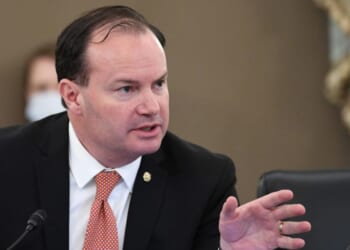Sir John Redwood is a former MP for Wokingham and a former Secretary of State for Wales.Ministers
In some quarters doing a DOGE is fashionable.
The flash exposure of undesirable and wasteful examples of US public spending caught the headlines.
It was combined with methods that alienated many public servants.
It has so far failed to follow through into a programme capable of taking out the advertised $1 trillion any time soon. Those of us who have toiled in the public sector vineyard to remove the bad fruit know it takes time and concerted action to pull off. The US Government has now lost its star advocate and is seeking to embed a more normal and acceptable version of spending control into each department.
Public sector productivity in the UK has plunged since 2019.
In the huge health budget it is down an alarming 9.6 per cent . All the main parties want to do something to revive it. The government has said it will cut administrative costs and find a 5 per cent improvement by the end of the decade.
The figures show this will be back end loaded, with the gains mainly coming in the last two years. Meanwhile for three years to 2026/7 admin costs stay high and in the case of the large welfare department go up, whilst the government spends an extra £3.25 bn on so called transition. The suspiciously round £2bn of spend for this year will take some doing.
Does the government know what extra computing and AI it needs? How will this be linked to fewer people, which presumably is needed to get some savings from all that extra digital spending? Why should we believe that after another three years of no progress costs will suddenly drop away and productivity leap forward either side of an election?
Years ago I took on the task of Chairman of a large quoted industrial UK group from being a Non Executive Director. The Executive Chairman had health problems and had to retire, whilst we had just published a demanding profit target for the year to see off a hostile take over bid.
It meant at a young age I got a fascinating job as no outsider would have wanted to come in to try to deliver the forecast.
Although the Group was considerably more efficient than parts of the public sector, it was still possible to take costs out to ensure success in keeping to our promise. I started with the costs of running the Chairman’s office to provide moral leadership to cost cutting. I did not resort to redundancies, but did exercise great control over any new external appointments, preferring to merge posts and promote from within to control the pay bill. The key to cost control I realised was to stop spending unless it was strictly necessary.
Stock levels could be brought down, inessentials cancelled. Programmes to raise quality helped, as getting things right first time and doing things promptly cuts down complaints and avoids the damage that delay can bring to stock, work in progress and customer patience.
The US and local UK DOGE approaches reveal some items that the public sector should never have spent money on which makes for good media stories. They can shock the public sector into avoiding some of the worst excesses. They do not however, engage with the day to day detail of controlling costs, they do not motivate staff to help, and they do not tackle the biggest cost of all in public service, the staff themselves.
Finding big money to save requires detailed work and a consistent adaptation.
I found in another industrial business I led that to clean up and improve a factory I could harness the work and good will of people on the shop floor. I told them I wanted to clean up and improve their working area, and that to do so we could save money at the same time. Cleaning the dirty glass roof greatly increased light into the factory. Recycling the packaging gave us an income. Containing the oil and other fluids saved money on them whilst removing mess from the factory floor.
Morale rose as the place improved.
My experiences as a County Councillor and Minister, of guiding the public sector, taught me engagement of staff is even more crucial because your staff do not have the same commitment to your aims as staff in a private sector business do. In the private sector all want to serve the customers well if properly directed, and all see the link between customer satisfaction, more orders, more profit and bigger bonuses.
In the public sector bonuses and promotions often are unrelated to the views and satisfaction levels of service users.
The service looks in on itself and not out to its impact on the users. Its executives may see the public as a nuisance and design systems to make access difficult.
I found the departments I presided over had plenty of people, but they were bad at focusing them on the priorities and the needs of the day, and slow to wind down old initiatives. Staff recruitment freezes were an easy way of getting attention to the best use of staff, and to get around a 7 per cent a year reduction in numbers as people left to retire or go elsewhere.
De-stocking was always a good idea, but trying to get a handle on excess stocks was not easy. Land and buildings were wastefully used, with the need to review and dispose of surplus property. There was no effective stimulus from the cost of unused and underused assets in the system.
There was a wish to go out to consultancies for work that properly directed and trained staff could do in house more cheaply.
Staff management is often poor. People are moved around to different jobs too often. Too many people are either trying to learn a new complex job, or are getting ready to hand over to someone else and losing interest.
There is little culture of making a senior manager responsible and then living with the task long enough to see it through and to assess how well it has been done. Officials like to do things through committees so no one is responsible and no one is to blame when it goes wrong. Too many cooks spoil the broth or in some cases mean there is no broth at the end of a big spend.
Too many Ministers see their job as managing the media and controlling the message, as if you can do that. They usually discover the press and public soon see the gulf between message and reality, because the Minister is not helping deliver what he or she has promised.
In government decide a policy, plan its implementation, get a trial up and running, then talk to the public about it. Announcing it without the details, scrambling to put in place the parts and then finding it is late, above budget and not very good is not a great model – but all too common.
Running a big consultation then ignoring the best advice that comes in is a sure way to annoy most people.
We need more healthy competition between those running Councils and government departments to see who can boost productivity. They need to understand higher productivity rests on higher quality, and controlling cost is not designed to worsen the service but to sharpen it.
In the Thatcher revolution Conservative Westminster and Wandsworth Councils showed, how you can improve core services, serve users better, get the costs down and charge a lower tax.
Too many Councils today expand their empires, lose money on bad investments they did not need to make, fail to drive quality and productivity and blame the government for their poor results. When a good private sector company lets customers down it apologises, improves and compensates. When a government department lets them down it demands more money from Ministers and denies it was at fault.
We need Ministers who can do better than that.


![Former Bravo Star Charged After Violent Assault Using a Rock-Filled Sock in Tennessee Walmart [WATCH]](https://www.right2024.com/wp-content/uploads/2025/07/Former-Bravo-Star-Charged-After-Violent-Assault-Using-a-Rock-Filled-350x250.jpg)



![Man Arrested After Screaming at Senators During Big Beautiful Bill Debate [WATCH]](https://www.right2024.com/wp-content/uploads/2025/06/Man-Arrested-After-Screaming-at-Senators-During-Big-Beautiful-Bill-350x250.jpg)









